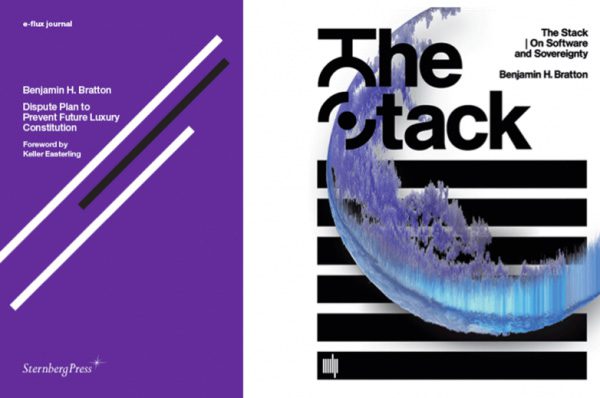BOOK:Benjamin H. Bratton
 Benjamin H. Bratton is a theorist whose work spans Philosophy, Art and Design. His research is situated at the intersections of political & social theory, emerging computational media & infrastructure, and interdisciplinary design methodologies. His two new books are: “The Stack. On Software and Sovereignty” and “Dispute Plan to Prevent Future Luxury Constitution”, from different publications.
Benjamin H. Bratton is a theorist whose work spans Philosophy, Art and Design. His research is situated at the intersections of political & social theory, emerging computational media & infrastructure, and interdisciplinary design methodologies. His two new books are: “The Stack. On Software and Sovereignty” and “Dispute Plan to Prevent Future Luxury Constitution”, from different publications.
By Efi Michalarou
What has planetary-scale computation done to our geopolitical realities? It takes different forms at different scales, from energy and mineral sourcing and subterranean cloud infrastructure to urban software and massive universal addressing systems, from interfaces drawn by the augmentation of the hand and eye to users identified by self, quantification and the arrival of legions of sensors, algorithms, and robots. Together, how do these distort and deform modern political geographies and produce new territories in their own image? In “The Stack: On Software and Sovereignty” (MIT Press), Benjamin Bratton proposes that different genres of computation, smart grids, cloud platforms, mobile apps, smart cities, the Internet of Things, automation, can be seen not as so many species evolving on their own, but as forming a coherent whole: an accidental megastructure called The Stack that is both a computational apparatus and a new governing architecture. We are inside The Stack and it is inside of us. “Dispute Plan to Prevent Future Luxury Constitution” (Sternberg Press), charts a treacherous landscape filled with paranoid master plans, failed schemes, and dubious histories. Benjamin H. Bratton’s kaleidoscopic theory-fiction links the utopian fantasies of political violence with the equally utopian programs of security and control. Both rely on all manner of doubles, models, gimmicks, ruses, prototypes, and shock-and-awe campaigns to realize their propagandas of the deed, threat, and image. Blurring reality and delusion, they collaborate on a literally psychotic politics of architecture. In this mosaic we glimpse a future city built with designed violence and the violence of design. As one ratifies the other, the exception becomes the ruler.
